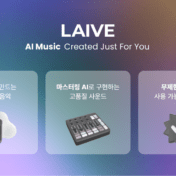
EntryKorea CEO, JiHyun Kim
The programming and Software education market is booming in Korea. Starting from next year, domestic software education will become mandatory for middle school students, and by 2018 it will become part of the national curriculum for elementary, middle and high school.
And Korea is not the only nation focusing on this area, with governments across the globe aiming to bake computer science into standard education. For example, as of this September computer science is a mandatory class, along with English, math, science and physical education.
In Korea, where education is a critical priority for parents and private academies are big business, this movement is likely to spark a new industry. Hoping to cash in on this opportunity are Ji-hyun Kim (CEO) and Kyu-min Sim (CTO) of Entry Korea. While satisfying Korean parents’ needs of top education for their offspring, they also want to develop courses that inspire students.
“We wanted to transform computer science learning from a boring subject into something that students love and enjoy,” explained Kim.
What are ‘Entry’ and ‘Entrybot Board Game’?
'Entry' is an education platform that teaches basic programming fundamentals. This is achieved through integrated hands-on experiences of building programming, using blocks, something that traditional programming classes have lacked. The team has also developed 'Entrybot Board Game,' an offline solution that helps students easily memorize their learnings. Both solutions are now supplied as teaching aids in many schools across the country.
While Software education is in the spotlight, complexities of programing language have been a barrier to interest from younger, and less geeky, students.
To combat this barrier the team decided to teach programming through visualization. “Instead of physically typing codes, students move blocks and actually experience the fundamentals of programming. As students play with the blocks they can see immediate results, which keeps them interested,” explained Kim.

'Entry' makes programming education fun and easy to grasp for non'geeky types
Why Entry?
“Entry came from the language commonly used in java script, C++ or other basic programming. In fact all the principles, e.g. branching statement, conditional statement, for statement, events, variable lists, etc, exist in the tool. Other blocks contain ‘native language commands’, such as "deflect when you reach the end of the screen." These configurations help students overcome the complexity of programming language and offer real world methods of overcoming programming dilemmas.
After ‘programming’ with the blocks, results are converted to programming languages and are executed. This is called ‘Entry Interpreter’ and is one of the core innovations upon which the educational curriculum is built on.
One interesting application that has been trialed is integration with the IoT technology, Arduino. Using ‘Entry,’ an Arduino-based input system can be created. Additionally, other input methods such as touch and gesture will be possible once the wifi integration is complete. With this application, students could feasibly control drones and other internet-based objects using Entry.
Check out a demonstration of the Arduino integration here.

EntryKorea CTO KyuMin Shim
What is the Competition Doing?
'Scratch' is also a block-based educational programming language created at MIT, but it can only be run in a PC environment. Since Entry is java script based, it can also be used on mobile.
“We expect that the future of education will be based on tablets and other mobile systems, so it didn’t make sense to build just for PC. Also, unlike Scratch, ‘Entry enables students to see programming errors, where they occurred, and tracks to see how the respective blocks were configured that led to the error.
Kim agreed that Scratch has superior technology in some areas, but believes that considering the last year, Entry has been moving forward at much faster rate: “While Scratch employs a more complex programming language we are growing to be a better platform.”
Current Status and Future Direction?
Currently Entry has about 5000 student projects posted on the platform. The team is analyzing these projects so we make improvements to the technology itself and make better recommendations about how to use it in the educational setting.
“Entry is a community and collaborative tool, and we are working towards better ways for users to create and share new blocks. We are also looking for the best ways to create teams within the solution, so students can create programs together, making learning a group experience.
The solution is also being used on NAVER's software education campaign. Lectures on how to use Entry are available and users can execute programs personally through Entry. New methods of education, accompanying text textbooks, teaching aid tools, and curriculums will become available.
Expansion beyond Korea
The company is working on entry into Asian markets. “There is great interest in Indonesia, Vietnam and other southeastern Asian countries in bolstering software education. So we are preparing new services specifically for these countries. We have already launched a localized version for Vietnam, in collaboration with Hochimin College of Education. The company is also in discussions with Hanoi Science and Technology University. Chinese and Japanese language versions are currently under development.





